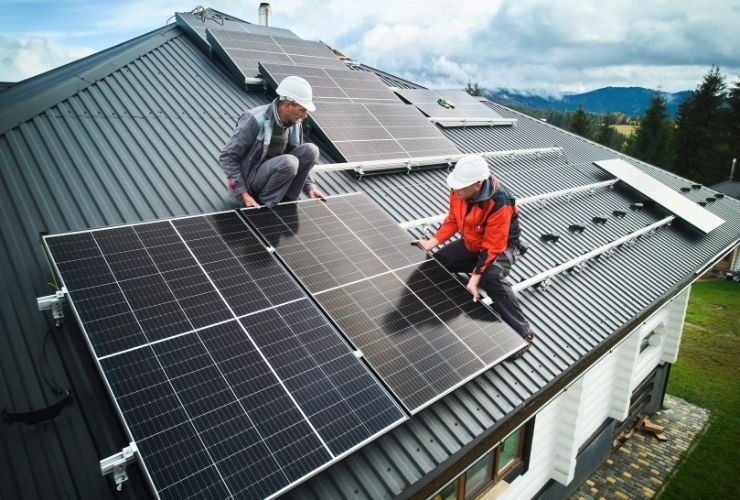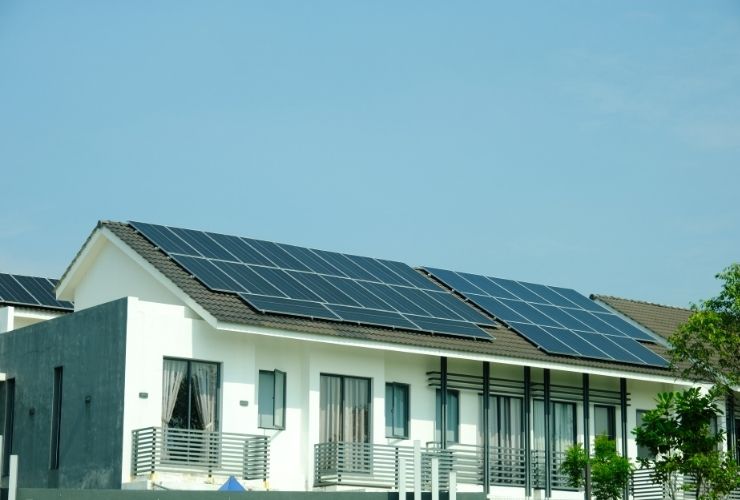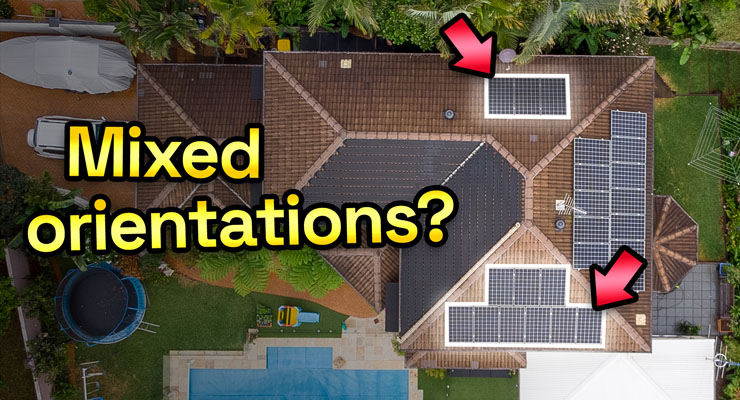Fast read
Mixed-orientation solar panel systems, where panels face different directions on the same string, offer unique advantages in specific scenarios. They are beneficial when site constraints like irregular rooftops or shading are present.
Such systems enhance space utilisation, mitigate shading effects, and provide flexibility in design. However, they entail complexity in installation and may experience efficiency losses because of varying sunlight exposure. Aesthetics can also be a concern. Consulting with experts and ensuring compliance with local regulations is crucial.
Mixed-orientation solar panel systems are a good choice for maximising energy production and sustainability. They are used when uniform panel orientation is not possible. However, they do face challenges.
Mixed-orientation solar panel systems
Solar power is becoming super popular because it’s eco-friendly. Normally, solar panels all face the same way to work best, but now, some folks are discussing mixed-orientation systems. These are setups where panels face different directions in the same array.
This guide will show you when and why mixed-orientation solar panels might be a good idea. We’ll keep things simple and explain everything you need to know about making them work. Let’s dive in and discover the potential of mixed-orientation solar panels.
When can you consider mixed-orientation solar systems?
In certain situations, mixed-orientation solar panel systems can provide unique advantages:
- Site constraints: Some rooftops may have varying orientations because of design limitations such as irregular roof shapes or obstructions. Installing solar panels with different orientations can help utilise available roof space optimally.
- Shading: Shading is a critical factor that can affect solar panel performance. If parts of your roof are shaded at certain times of the day, a mixed-orientation system can help. This system reduces shading effects and may increase energy production.
- Inverter capacity: The inverter in a solar installation is responsible for converting DC power generated by the panels into usable AC power. When you connect panels facing different directions to the same inverter, the inverter can adjust to different power levels. This adjustment helps the system work better.
- System design and configuration: Designing a mixed orientation system requires careful planning. Panels with different orientations must be electrically compatible and connected properly to form a single string. Choosing the right inverter and balance-of-system components is essential for a successful setup.
- Monitoring and maintenance: Implementing robust monitoring systems to track the performance of a mixed orientation system is crucial such as solar analytics. Monitoring allows you to identify any issues or suboptimal performance and take corrective actions. Regular maintenance, including cleaning and inspection, ensures panels operate at peak efficiency.

Benefits of mixed orientation solar panels
Mixed-orientation solar panels offer several benefits:
Enhanced space utilisation: Mixed-orientation systems are awesome because they make your roof space work exceptionally well, even if your roof is a bit weirdly shaped. They can be set up in different directions in the same setup, so they cover more area. That means even if your roof is small or not a regular shape, these systems can still fit and make the most of it. It’s like having a solution made just for your roof.
- Shading mitigation: By having panels face different directions, shading effects can be minimised, resulting in improved energy production, even in partially shaded areas.
- Increased flexibility: Mixed-orientation systems are like problem-solvers for roofs that aren’t the typical shape or where shading from things like trees or buildings might be an issue. Unlike regular setups where all panels face the same way, mixed-orientation systems let panels face different directions within the same setup. This means they can work better on roofs that aren’t straightforward, and they can still make power even if part of the roof is in the shade.
Challenges and considerations
However, there are challenges to consider:
- Complexity: Setting up a mixed-orientation system is harder than a regular one where all panels face the same way. It needs extra planning, figuring out how to connect everything, and maybe using different mounts for the panels. With a regular setup, everything is simple because all panels face one direction. But with mixed-orientation solar PV systems, panels face different ways, so it’s more complicated to connect them all properly.
- String efficiency: Solar panels perform best when exposed to direct sunlight. In mixed orientation systems, panels may experience varying levels of sunlight exposure, leading to mismatch losses. The overall energy production of the string is limited by the lowest-performing panel.
Aesthetics: Mixed-orientation solar power systems might not look as nice as systems where all the panels face the same way. Some homeowners like their solar setup to have a neat and tidy look, with all the panels lined up in a uniform way. However, with mixed-orientation systems, the panels might face different directions, which can make the setup look a bit uneven.
Consultation and compliance
Before choosing a solar panel system that can generate power from various angles, talk to a qualified solar expert or engineer. This will help you make an informed decision. They can provide you with valuable information and guidance.
It is important to seek their expertise before making a final decision. They’re the pros who can look at your situation and figure out if it’s a good fit. They’ll check things like how your roof is set up, if there’s any shade blocking the sun, and how much space you have.
Also, don’t forget to look into the rules and codes in your area, different places might have different requirements for solar setups, so it’s important to make sure you’re following the rules. Your installer or local authorities can help you with this. Safety is crucial, so always check with the right people to make sure everything is done safely and legally.
Conclusion
Solar panel systems with panels facing different directions can be beneficial when there are limitations such as shading or space constraints. In some cases, it may be a good option to have panels facing different directions. This can help maximise energy production even in less ideal conditions.
Having panels facing different directions can help offset any limitations and still make the system efficient. These systems offer benefits such as enhanced space utilisation and shading mitigation. However, they also come with complexities and challenges, including system design and efficiency considerations.
Before you install a mixed-orientation solar panel system, talk to professionals and check local rules. Ensuring that you are following the regulations is crucial. By carefully evaluating your unique circumstances, you can make an informed decision that optimises energy production and sustainability.



